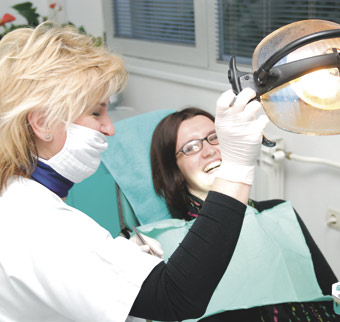Retaining patient satisfaction
Abid Faqir presents a successful case of an implant-retained over denture in a patient unhappy with his current lower prosthesis
A 59-year-old male patient was referred by our in-house consultant prosthodontist after having complete full upper and lower dentures fitted. The patient explained that he was not coping with retaining his lower denture. The patient has had dentures for six years after continually losing teeth over the past 20 years. He is married and is a retired chef. He smokes 20 cigarettes per day and does not drink alcohol. His medical history is unremarkable.
At the time of attendance there were no signs or symptoms of any TMJ dysfunction and no pain on palpation of the muscles of mastication. His dentures were set to a class 1 occlusion and he was comfortable with the bite and overall tooth position. He had a low smile line. Intraorally his soft tissues were pink and healthy.
The patient had an excellent upper denture and only wanted to consider treatment in the lower arch. A CT scan was carried out and assessed with denture markers. The patient had fairly good keratinised tissue left on the lower ridge, however, ridge height was minimal. There seemed to be adequate bone volume to consider implant treatment. We looked at the various treatment options that were available. We discussed the pros and cons of implant retained over denture and implant-retained fixed bridgework. We also talked about bar-retained or ball-retained.
He opted for the over-denture due to cost and opted for a bar-retained as he knew of a friend who had ball attachments and he seemed convinced that they don’t work as well.
The patient decided on the following treatment plan:
1. Appointment with hygienist to optimise denture oral hygiene.
2. Smoking cessation advice.
3. Inform consultant prostho- dontist of treatment plan.
4. Placement of two lower implants using the CT scan that had been taken and using the denture with markers.
5. After two months, take implant head impressions as well as replicating the lower denture with a reline over the implant heads.
6. Technician constructs bar on the implants and fits denture to this.
7. Wax try-in.
8. Final denture fit and removal and insertion instructions.
9. Regular reviews as with normal implant protocols.
The treatment was carried out exactly as described above. Two NobelActive 13mm regular implants (torque to 45Ncm) were placed with a flap technique (crestal incisions with minimal envelope opening) and healing abutments. The surgery was carried out under local anaesthetic.
The patient reported minimal post-operative pain. Post-operative instructions stressing a soft diet for six weeks were given.
After a number of months, we carried out X-ray examination as well as clinically checking the osseointegration. We took closed tray impressions with a special tray and relined the replica denture. The bar and denture were fitted after one wax try-in stage.
The patient was extremely happy with the final outcome. Final X-rays were taken to confirm proper seating. The patient has been reviewed on a periodic basis. The X-rays and photographs show the situation after eight months.
The patient was extremely pleased with the final result and will be proceeding to the upper implants in a few months.
The treatment was carried out with minimal complications and no changes in the plan were made. The patient was impressed by how little post-op discomfort there was and the straightforward nature of the procedure.
He has also been extremely impressed by the retention that was achieved.
The ability to use the CT allowed the case to be treated in a straightforward nature. There would be little I would change about the treatment plan. The most challenging part of the case was to get the patient to stop smoking. However, we did get some reduction around the time of the surgery.
About the author
Dr Abid Faqir BDS(Glasg), MFDS RCS (Edin), MSc(MedSci), Dip Imp Dent (RCS Edin), is available at the Scottish Centre for Excellence in Dentistry for implant and restorative dentistry referrals.

